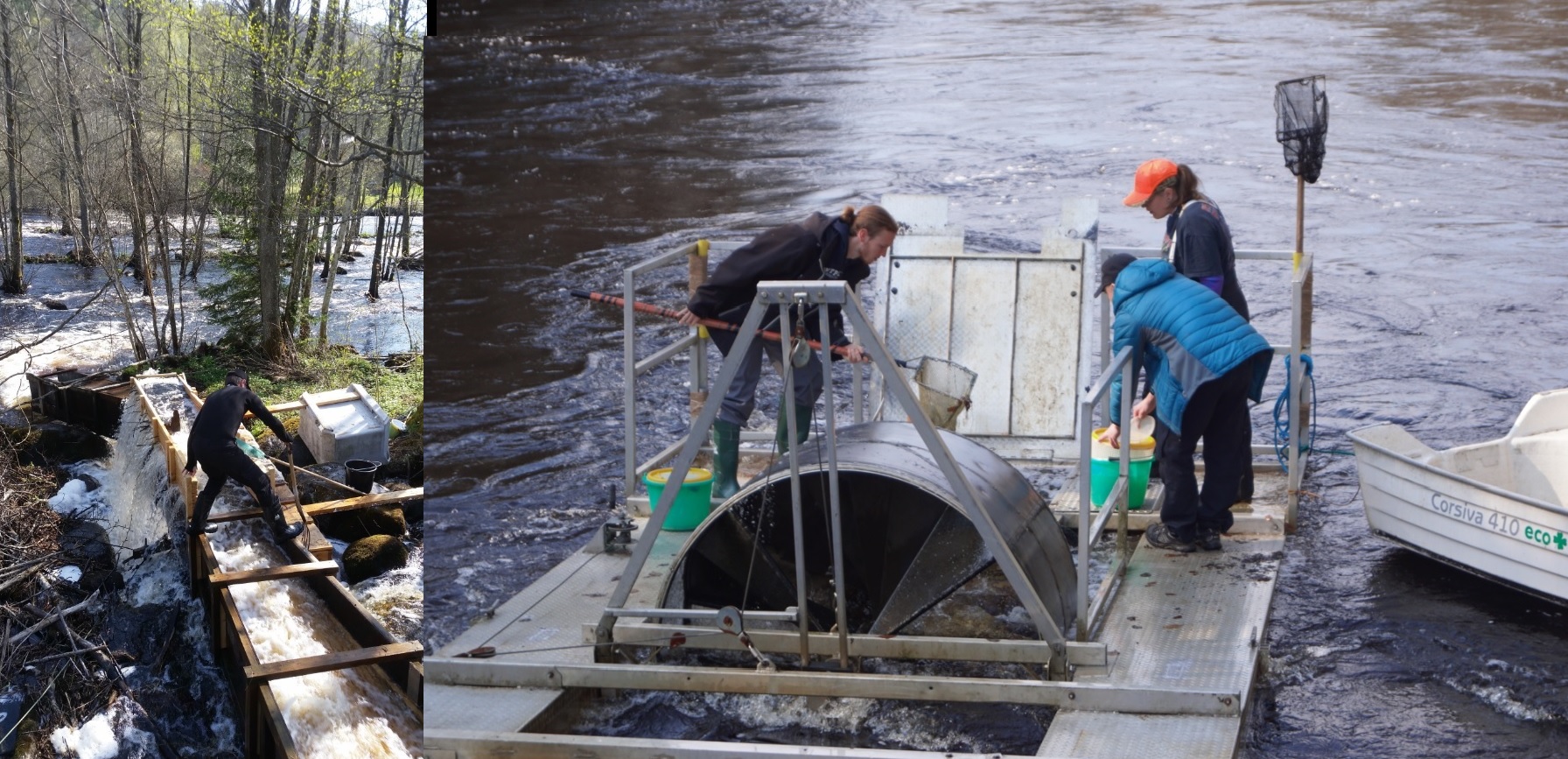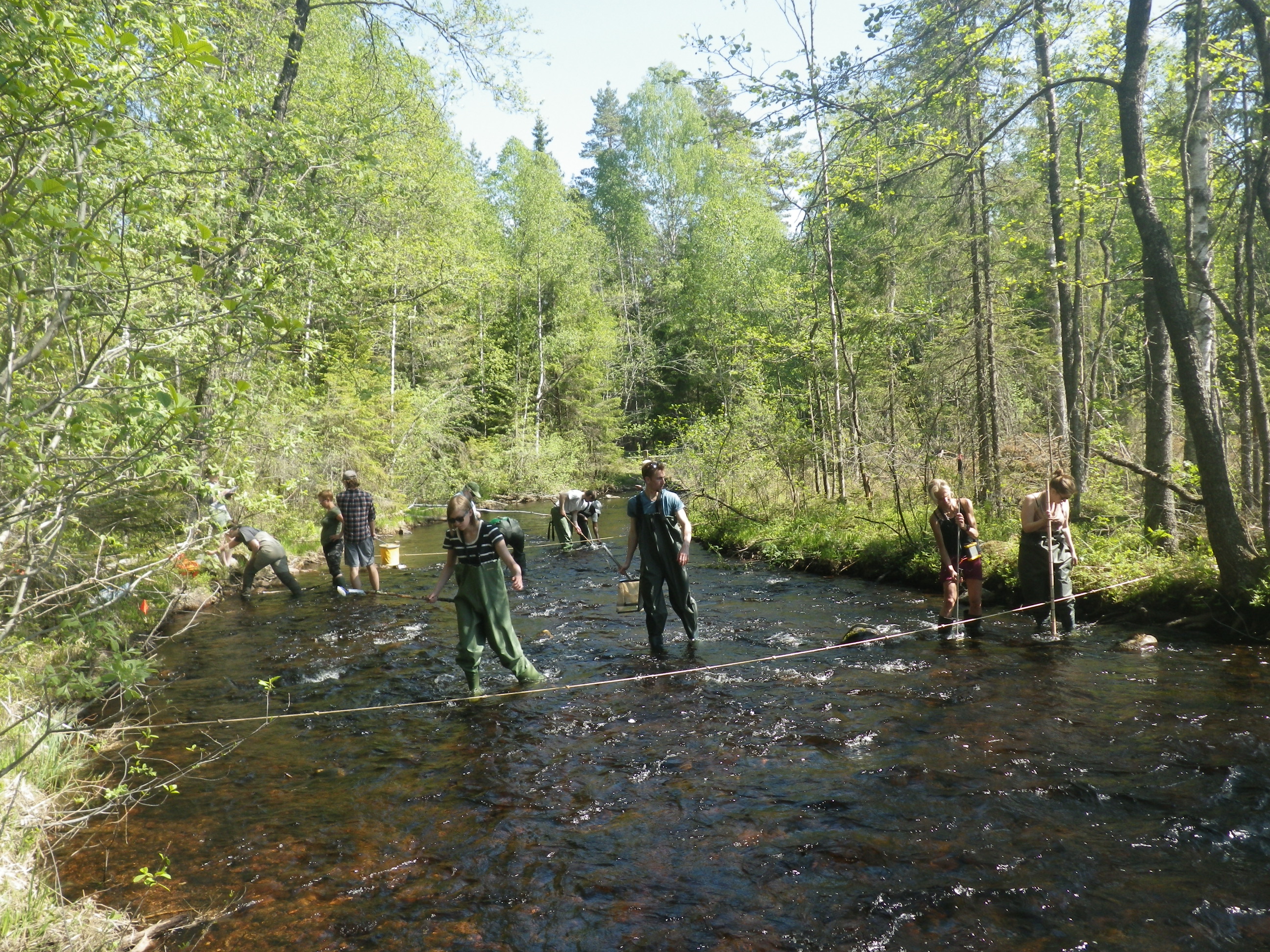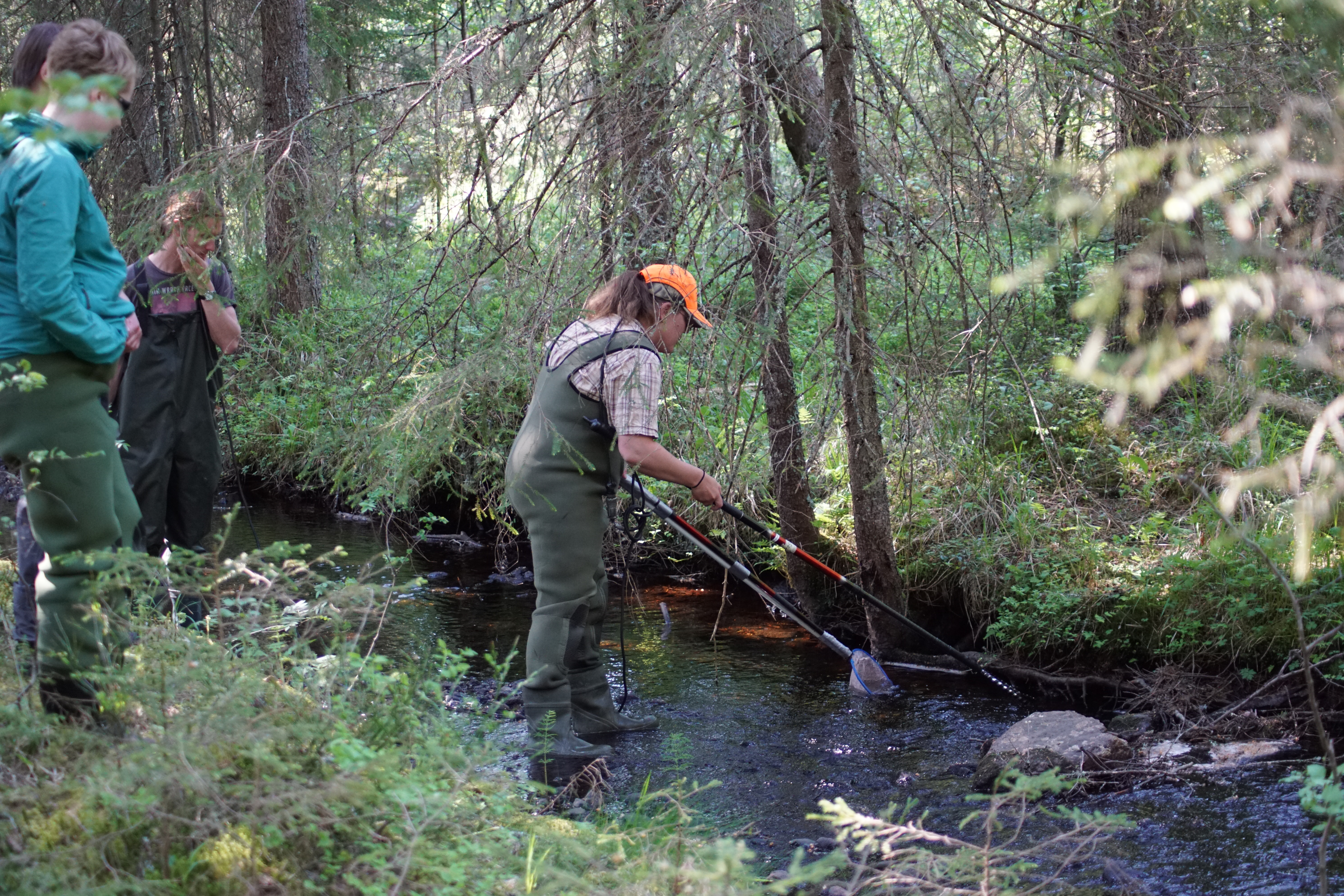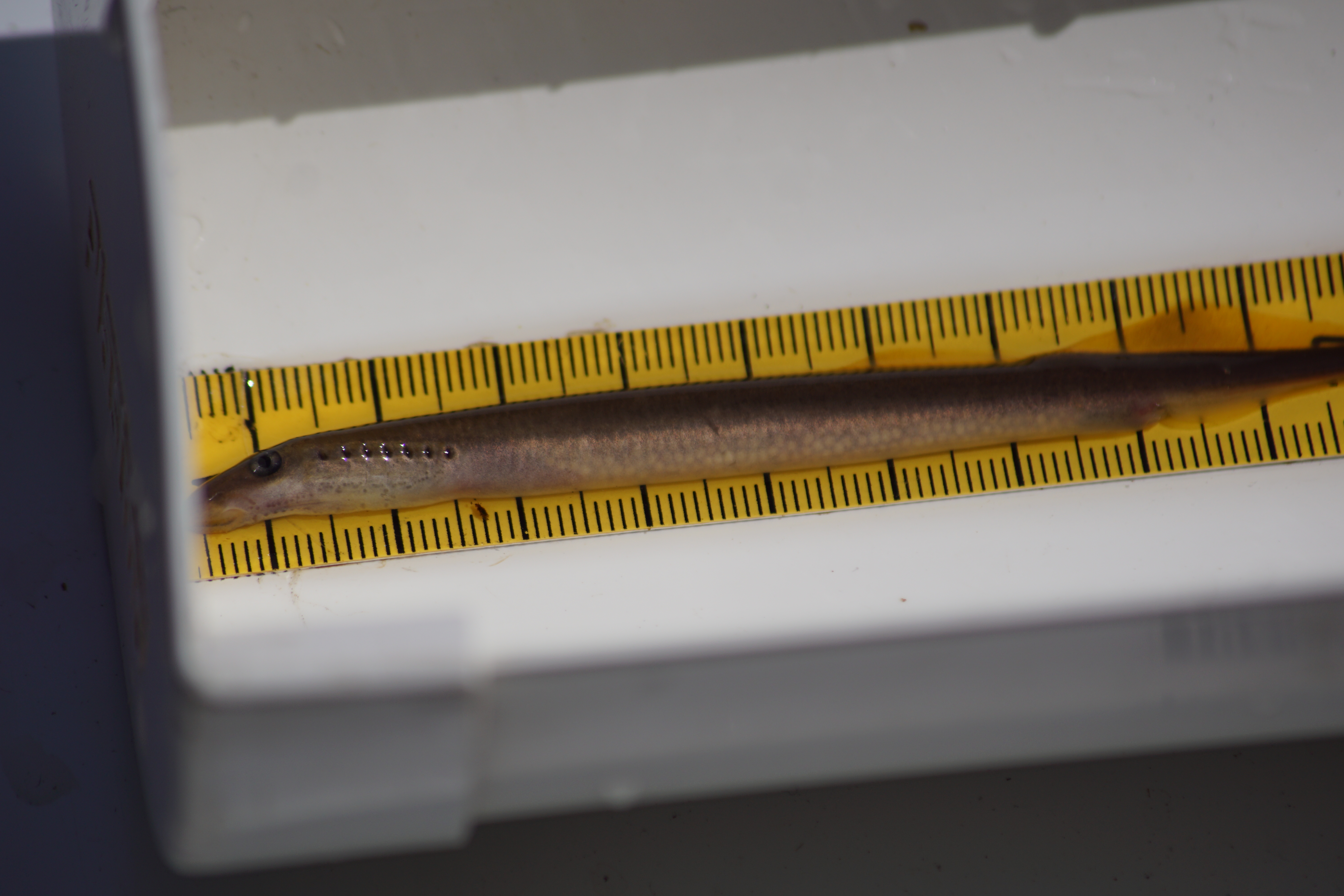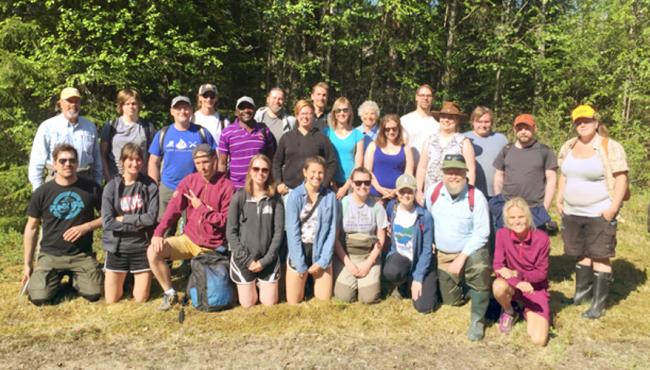Amy Newsom’s internship
Posted by Karl Filipsson | Naturresurs rinnande vatten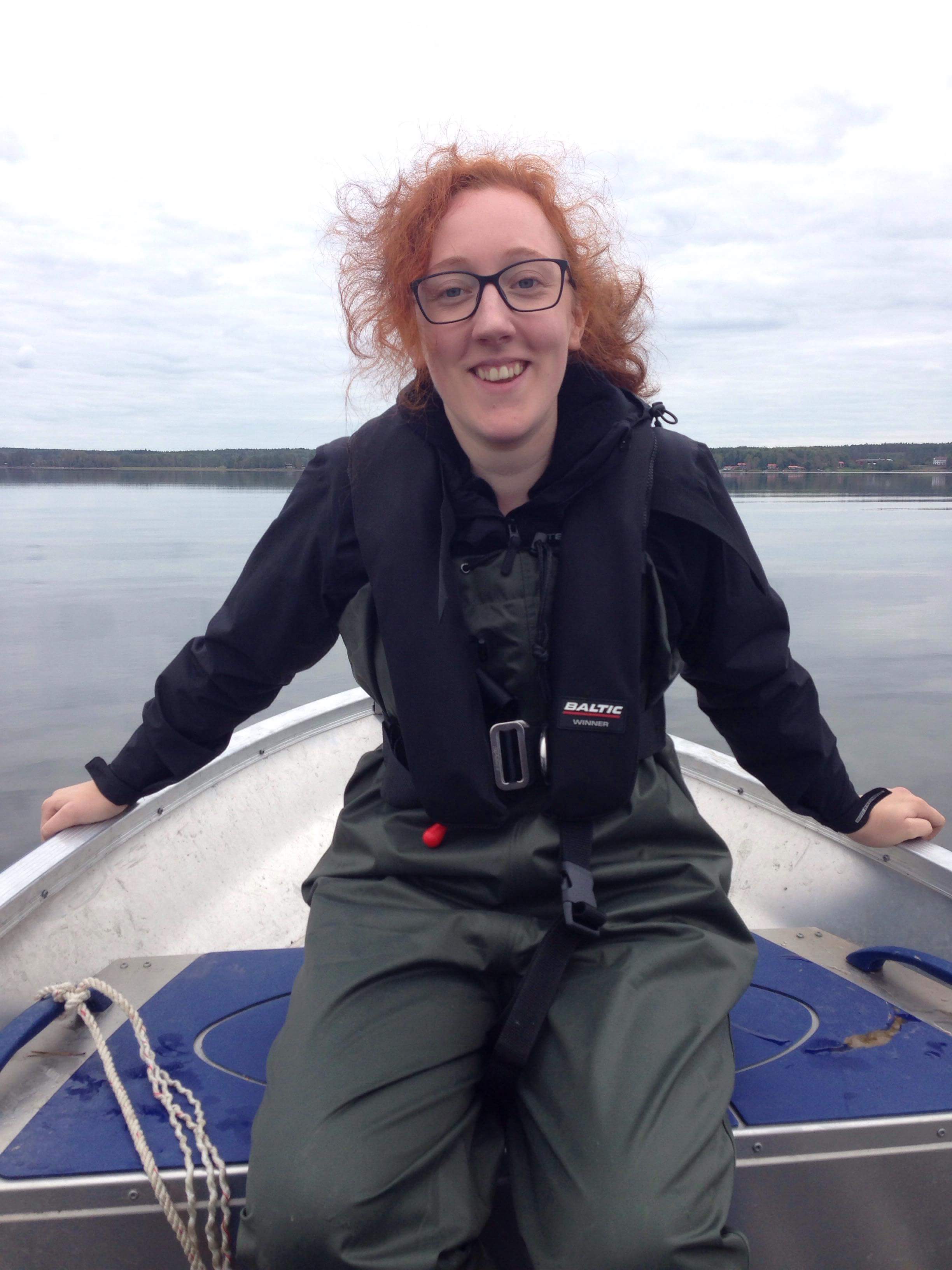
Amy Newsom on lake Alstern.
In August and September 2018, Amy Newsom from Germany visited Karlstad University and did an internship with NRRV. Here she writes about her months at Karlstad University.
“Having spent a year at Karlstad University as an exchange student in 2017 in the framework of my bachelor program “Environmental and Sustainability Studies” at the Leuphana University in Lüneburg, Germany, I had already been able to gain a first impression of the university’s biology department, which sparked my interest in freshwater ecology. Consequently, I was thrilled to have the opportunity to join the Naturresurs rinnande vatten Team for a six-week internship in August and September of 2018.
During the weeks I spent at Karlstad University, I was able to work with different researchers, getting to know a variety of projects and greatly extending my previous knowledge on freshwater and riparian ecology, in particular river connectivity. My main aim in this internship was to gain more practical research experience, so I was glad to be able to spend a lot of time both in the lab and in the field. For example, my work included processing raw data on the ventilation rates of young trout to assess differences in metabolism efficiency, counting the eggs of spiders gathered in the field and preparing samples for stable isotope analysis to assess the impact of hydro dams on food web interactions of fish. This was a particularly interesting experience as stable isotope analysis was a new scientific procedure to me, and I was keen to learn more about it. I was also excited to join in some of the field work conducted during my time at NRRV, collecting fish, invertebrates and plankton samples from the lake Alstern and electrofishing in the rivers Mörrumsån and Emån to assess the overall community composition at different sites. I was furthermore able to gain valuable insights into the design of research experiments while accompanying the setting up of an experimental flume in Älvkarleby and the preparation of eel traps in the river Alsterälven. In the time I spent in the office, I was also able to gather more experience in data analysis and scientific writing, both helpful preparations for my upcoming bachelor thesis.
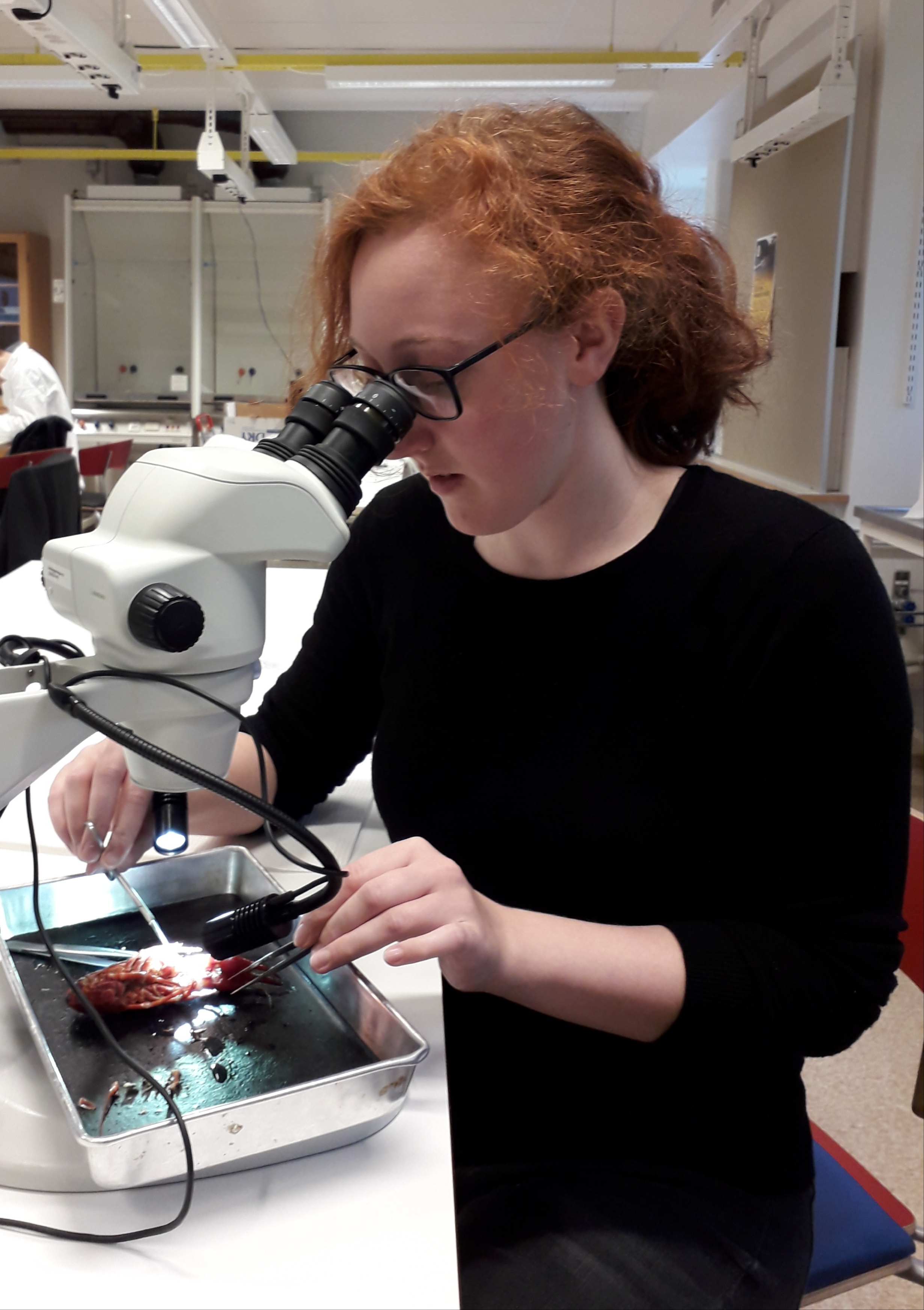
Amy Newsom dissecting a crayfish.
Returning to Karlstad also gave me the opportunity to improve my Swedish, reconnect with old friends and make new contacts, as well as further explore the forests, rivers and lakes in the area that I have come to love so much. My thanks go out to John Piccolo, on whose invitation I was able join NRRV as an intern, the International Offices both in Karlstad and at my home university for helping me with the administrative process, and the German foundation Meifort Stiftung, whose generous support made this internship possible for me. I am also incredibly grateful to all the researchers at the KAU biology department who warmly welcomed me into their team, took the time to introduce me to their work and helped me gain new knowledge and experience, in particular Olle Calles, Rachel Bowes, Larry Greenberg, Denis Lafage, Karl Filipsson, Andrew Harbicht, Lovisa Lind and Niclas Carlsson.”

Amy Newsom and Andrew Harbicht (NRRV-postdoc) electrofishing in river Mörrumsån.




